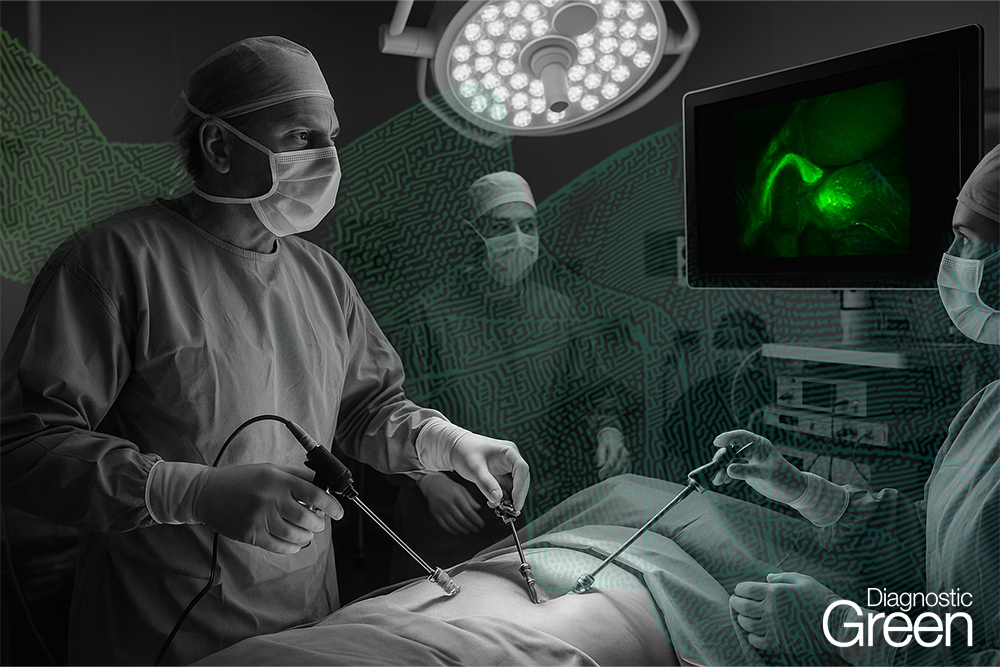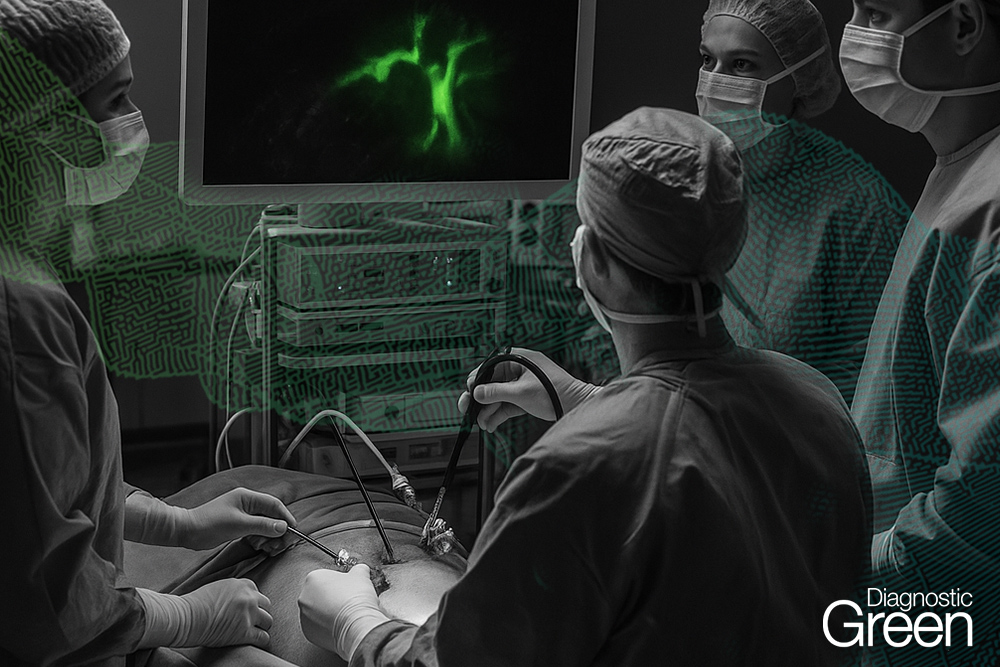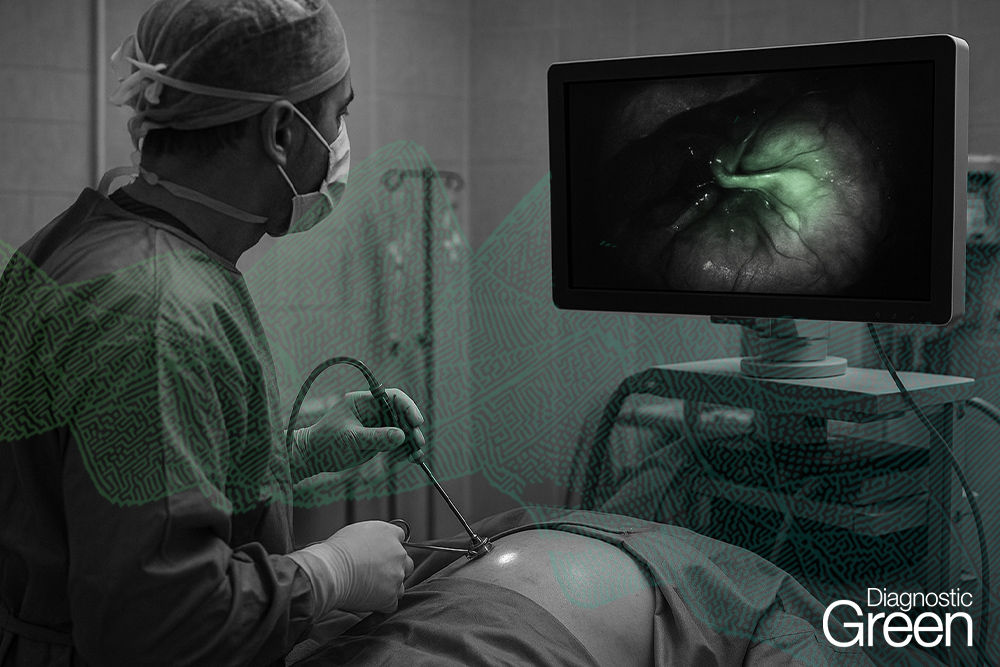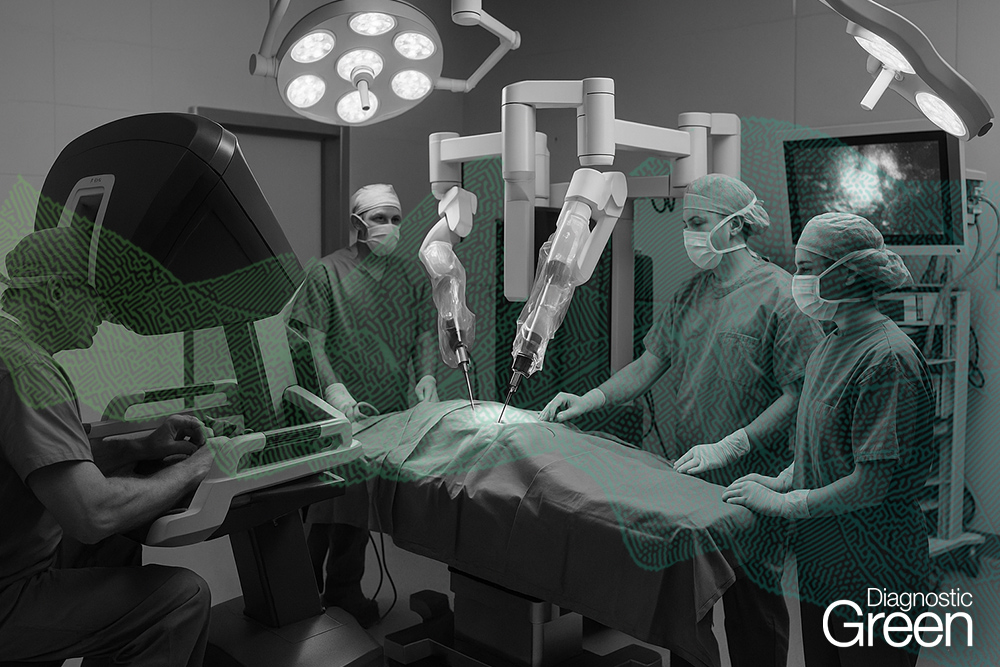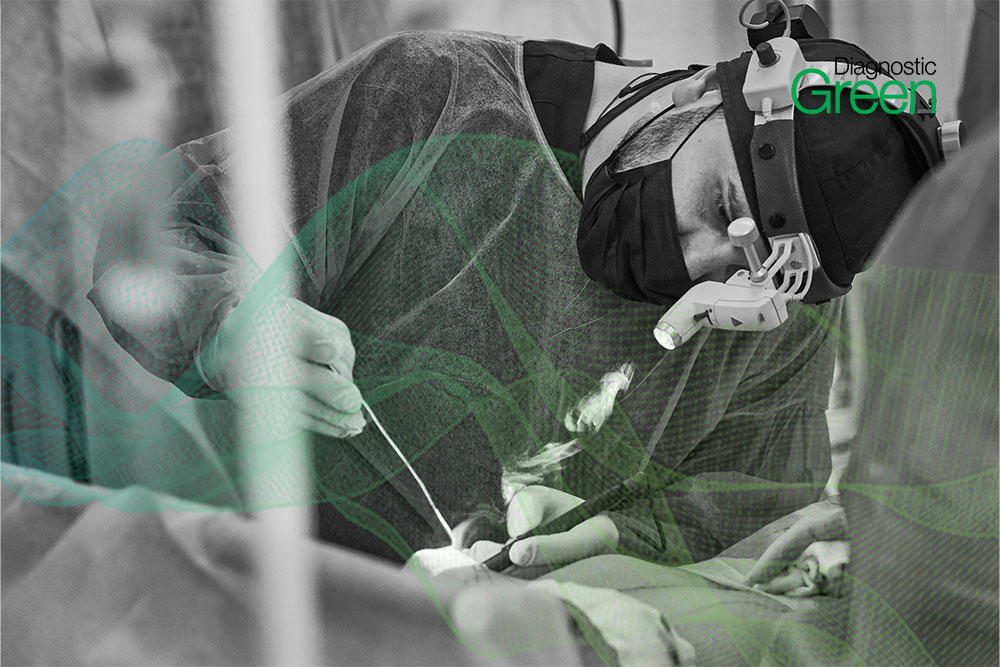Combining CVS with ICG cholangiography enhances bile duct visualization and lowers bile duct injury risk in laparoscopic cholecystectomy.
Continue readingFluorescence indocyanine green (ICG) for sentinel-lymph-node mapping in colorectal cancer: a systematic review
Objective: Modern surgical guidance in laparoscopic colon cancer procedures could be enhanced by visualizing lymphatic flow during surgery, already helping surgeons in determining the precise extent of digestive resection and could be useful in lymphadenectomy. Related to oncological procedure, lymphadenectomy is mandatory to assess the extension of the disease. To explore this approach, the objective of this review is to examine the use of indocyanine green fluorescence imaging for real-time in vivo identification of lymphatic flow and especially sentinel nodes in patients undergoing elective surgery for colorectal cancer.
Methods: A systematic review was conducted to identify relevant studies on sentinel node mapping using indocyanine green (ICG) in colorectal cancer surgery. A comprehensive search was performed in electronic databases including PubMed, Embase, and Cochrane Library from inception to December 2024. The search strategy incorporated relevant keywords and MeSH terms, combining variations of “colorectal neoplasms,” “sentinel lymph node,” “indocyanine green,” and related terms. The search was limited to articles published in English language.
Results: A total of 405 studies were identified across all databases. After screening, 45 full-text articles were assessed for eligibility, and 12 studies were ultimately included in the systematic review. ICG-FI has not yet demonstrated superiority over the standard blue dye technique. Moreover, a notable heterogeneity exists among the reported studies concerning ICG dosage, injection methods and the definition of positive LN status for sensitivity calculations, making direct comparisons challenging.
Conclusion: Despite the potential shown with other surgical oncological resections, ICG-FI requires further investigation and standardization in protocols and indications to fully harness its capabilities for SLN detection in CRC, especially metastatic nodes. Larger patient populations should be considered in future research to comprehensively assess its efficacy. This systematic review highlights the heterogeneity and limitations of current evidence regarding ICG-FI for SLN detection in colorectal cancer. While preliminary results are encouraging, further well-designed prospective trials are required before routine clinical implementation can be recommended.
The use of indocyanine green and technetium-99 for dual-tracer sentinel lymph node biopsy in breast cancer
ICG with Tc99 achieves high SLN detection in breast cancer, offering a safe, effective alternative to blue dye with fewer complications.
Continue readingSurgical outcomes of conventional versus indocyanine green fluorescence-guided laparoscopic cholecystectomy in acute cholecystitis: a propensity score-matched analysis
ICG-guided cholecystectomy reduces bailout procedures in acute cholecystitis without increasing complications or operative time.
Continue readingRoute of Surgery for Sentinel Node Biopsy in Endometrial Cancer: Laparoscopy Versus Robotics
Background/Objective: Sentinel lymph node (SLN) mapping is an accepted technique for the nodal staging of early-stage endometrial cancer. It is carried out commonly by minimally invasive approach, either by laparoscopy or robotics-assisted surgery. The primary aim of this study was to compare the detection rate of SLN mapping between laparoscopic and robotic surgery. Methods: A retrospective observational study including patients operated on from February 2024 to March 2025, diagnosed with endometrial cancer who underwent hysterectomy, bilateral salpingo-oophorectomy and SLN mapping. Among a total of 60 patients, 38 (63.3%) underwent laparoscopic surgery and 22 (36.7%) robotic surgery. We compared SLN detection rate and perioperative outcomes between the two routes of approach. Results: No significant differences were observed in the overall and bilateral SLN detection rate between laparoscopic and robotic surgery (97.3% and 84.2% vs. 95.5% and 91%, respectively). Significant differences were observed in operative time, with a median of 125 vs. 110 min (p = 0.004), and in hospital stay, with a median of 3 vs. 2 days (p = 0.002), with both being shorter in the robotic surgery group. No differences were observed in terms of number of SLN detected, percentage of positive nodes, intra or postoperative complications rate, or percentage of conversion to laparotomy. Conclusions: No differences were found in SLN detection rates between laparoscopic and robotic surgery. However, robotic surgery demonstrated advantages in terms of reduced operative time and shorter hospital stay.
Intraoperative ICG-VA with FLOW800 and multimodal fusion neuro-navigation for the resection of arteriovenous malformation with reduced blood loss
Combining ICG-VA, FLOW800, and neuro-navigation reduced blood loss and improved recovery in AVM surgery, enhancing safety and efficacy.
Continue readingIndocyanine green fluorescence predicts biliary complications in living donor liver transplantation: a prospective cohort study
Low ICG fluorescence slope and prolonged cold ischemia time predict biliary complications after living donor liver transplantation.
Continue readingSystemic indocyanine green administration to detect bile leakage after liver surgery: a prospective clinical trial, using historical controls
Systemic ICG with NIR imaging lowered POD 3 drainage bilirubin in liver surgery, showing safety and effectiveness in bile leak detection.
Continue readingProspective analysis of factors influencing the change of the section line based on fluorescence angiography with ICG for colorectal anastomosis
ICG angiography influenced section line changes in 16.5% of colorectal cases. Age >60 and TIFV ≥20s were key predictive risk factors.
Continue readingLaparoscopic Anatomical Hepatectomy Using Takasaki’s Approach and Indocyanine Green Fluorescence Navigation
Takasaki’s method with ICG fluorescence enhances safety and precision in complex laparoscopic liver resections for hepatocellular carcinoma.
Continue reading
